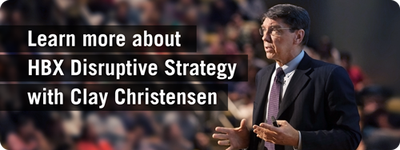
For us here at Harvard Business School, budget season coincides with the NFL football season. While the idea of "budget season" may incite a few grunts or rolled eyes, careful budget plannning is an important component of running a business. Read on for important budgeting tips with a football twist!
Budgeting is a Team Sport!
A successful budget manager will need to tackle an organization's operations and engage with functional managers and their teams in order to understand the role of their group along with the work streams and tasks under their responsibility. However, before you start blitzing and tackling your fellow co-workers, it’s a good idea to review your organization's game plan.
What’s the Game Plan, Coach?
Budgets are built for the purpose of measuring and monitoring key activities in pursuit of an organization's goals and objectives. The game plan for many organizations comes in the form of mission statements, or multi-year strategic and financial plans. Before starting on building a budget, an understanding of your organizations goals and objectives is critical to creating a successful plan that will meet your needs.
Do Your Job!
Just like the players on a football team, each team member at an organization plays a specific role. Team members must focus their efforts on the components of an organizations objectives that are more in line with their area of expertise to help move the entire organization toward the goal line. Building a successful budget requires an understanding of these various players, the jobs they are tasked with, and the key metrics that drive them.
For example, what are the work streams that a marketing team is tasked with so that an organization can achieve its goals and objectives? What are the key metrics that drive and impact that work stream? The resulting answers are the building blocks of a budget.
Learn From the Past, But Focus on What's Ahead
After a big win or loss, most coaches will tell you to shake it off, learn from it, and focus on the next game. Similarly, historical data is essential to building a budget but should be used as a reference point and not necessarily a starting point. Business conditions change rapidly and basing your current budget on historical information can adversely impact budgets within other areas of an organization.
Huddle Up!
Regular communication is key to the success of a budget. Establish an organizational process to regularly review actual performance against the current budget. This is a critical part of building a successful budget that will allow teams to monitor their performance, re-allocate resources, and shift business priorities.
Keep in mind that budgets are dynamic, and occasionally the team may need to call a budget audible to update the budget, or rather provide a forecast. Having a review process in place will facilitate the forecasting process and will allow the organization to have updated information to use in their decision making.

About the Author
John is the Associate Director of Finance, Planning & Analysis at HBX primarily focusing on financial planning and reporting for the department. He is a graduate of Northeastern University and has worked throughout his career in the educational publishing and technology space. In addition to being an avid golfer who has witnessed 3 hole in ones, John is a board member of two local non-profit youth organizations, The Boston Hurricanes and The Business of Doing Good.




























